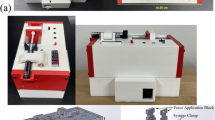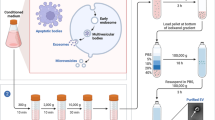Abstract
In order to study the mechanism by which an omental pedicle promotes healing when applied to an injured site, we injected a foreign body into the abdominal cavity to activate the omentum. One week after the injection, we isolated the omentum and measured blood vessel density, blood content, growth and angiogenesis factors (VEGF and others), chemotactic factors (SDF-1α), and progenitor cells (CXCR-4, WT-1). We found that the native omentum, which consisted mostly of adipose tissue, expanded the mass of its non-adipose part (milky spots) 15– to 20-fold. VEGF and other growth factors increased by two– to four-fold, blood vessel density by three-fold, and blood content by two-fold. The activated omentum also showed increases in SDF-1α, CXCR-4, and WT-1 cells (factors and cells positively associated with tissue regeneration). Thus, we propose that an omentum activated by a foreign body (or by injury) greatly expands its milky-spot tissue and becomes rich in growth factors and progenitor cells that facilitate the healing and regeneration of injured tissue.









Similar content being viewed by others
References
Cannaday JE (1948) Some uses of undetached omentum in surgery. Am J Surg 76:502–505
Clifton GL, Donovan WH, Dimitrijevic MM, Allen SJ, Ku A, Potts JR III, Moody FG, Boake C, Sherwood AM, Edwards JV (1996) Omental transposition in chronic spinal cord injury. Spinal Cord 34:193–203
Duffill J, Buckley J, Lang D, Neil-Dwyer G, McGinn F, Wade D (2001) Prospective study of omental transposition in patients with chronic spinal injury. J Neurol Neurosurg Psychiatry 71:73–80
Goldsmith HS (2004) The evolution of omentum transposition: from lymphedema to spinal cord, stroke and Alzheimer’s disease. Neurol Res 26:586–593
Goldsmith HS, de la Torre JC (1992) Axonal regeneration after spinal cord transaction and reconstruction. Brain Res 589:217–224
Goldsmith HS, Brandt M, Waltz T (2000) Near total transaction of human spinal cord: a functional return following omentum-collagen reconstruction. In: Goldsmith HS (ed) The omentum: application to brain and spinal cord Forefront, Wilton, pp 76–92
Gudehithlu KP, Ahmed N, Yu H, Litbarg, NO, Garber SL, Arruda, JAL, Dunea G, Singh AK (2005) Antagonism of VEGF results in microvessel attrition and disorganization of wound tissue. J Lab Clin Med 145:194–203
Halverson JM, Butterman MK, Legeir JF, Mann WJ Jr, Hoefer RA Jr (1994) Perforation of Meckel’s diverticulum caused by injestion of a coin. South Med J 87:823–824
Hammerman MR (2004) Renal organogenesis from transplanted metanephric primordia. J Am Soc Nephrol 15:1126–1132
Hastie ND (2001) Life, sex, and WT-1 isoforms—three amino acids can make all the difference. Cell 106:391–394
Hatch HM, Zheng D, Jorgensen ML, Petersen BE (2002) SDF-1α/CXCR-4; a mechanism for hepatic oval cell activation and bone marrow stem cell recruitment to the injured livers in rats. Cloning Stem Cells 4:339–351
Humes HD, Cielinski DA, Coimbra TM, Messana JM, Galvao C (1989) Epidermal growth factor enhances renal tubule cell regeneration and repair and accelerates the recovery of renal function in postischemic acute renal failure. J Clin Invest 84:1757–1761
Kayali AG, Gunst KV, Campbell IL, Stotland A, Kritzik M, Guoxun L, Flodstrom-Tullberg M, Zhang Y-Q, Sarvetnick N (2003) The stromal cell-derived factor-1α (SDF-1α)/CXCR-4 ligand-receptor axis is critical for progenitor survival and migration in the pancreas. J Cell Biol 163:859–869
Kin T, Korbutt GS, Rajotte RV (2003) Survival of islets in omental pouch. Am J Tranplant 3:281–285
Kreidberg JA, Sariola H, Loring JM, Maeda M, Pelletier J, Housman D, Jaenisch R (1993) WT-1 is required for early kidney development. Cell 74:679–691
Kreisberg JL, Hoover RL, Karnowsky MJ (1978) Isolation and characterization of rat glomerular epithelial cells in vitro. Kidney Int 14:21–30
Lee H, Cusick RA, Utsunomiya H, Ma PX, Langer R, Vacanti JP (2003) Effect of implantation site on hepatocytes heterotopically transplanted on biodegradable polymer scaffolds. Tissue Eng 9:1227–1232
Liebermann-Meffert D (2000) The greater omentum: anatomy, embryology, and surgical applications. Surg Clin North Am 80:275–293
Luijendijk RW, Lange DCD de, Wauters CCAP, Hop WCJ, Duron JJ, Pailler JL, Camprodon BR, Gelsdorp HJ van, Jeekel J (1996) Foreign material in postoperative adhesions. Ann Surg 223:242–248
Nigam S, Lieberthal W (2000) Acute renal failure. III. The role of growth factors in the process of renal regeneration and repair. Am J Physiol Renal Physiol 279:F3–F11
Pritchard-Jones K, Fleming S, Davidson D, Bickmore W, Porteous D, Gosden C, Bard J, Buckler A, Pelletier J, Housman D (1990) The candidate Wilms’ tumor gene is involved in genitourinary development. Nature 346:194–197
Rogers SA, Chen F, Talcott M, Hammerman MR (2003) Islet cell engraftment and control of diabetes after transplantation of pig pancreatic anlagen. Am J Physiol Endocrinol Metab 286:E502–E509
Sigrist S, Machine-Neuville A, Mandes K, Calenda V, Legeay G, Bellocq J-P, Pinget M, Kessler L (2003) Induction of angiogenesis in omentum with vascular endothelial growth factor: influence of encapsulated rat pancreatic islets during transplantation. J Vasc Res 40:359–367
Singh R, Singh AK, Alavi N, Leehey DJ (2003) Mechanism of increased angiotensin II levels in glomerular mesangial cells cultured in high glucose. J Am Soc Nephrol 14:873–880
Singh AK, Gudehithlu KP, Pegoraro AA, Singh GK, Bashiruddin K, Robey RB, Arruda Jose AL, Dunea G (2004) Vascular factors altered in glucose-treated mesangial cells and diabetic glomeruli. Changes in vascular factors impair endothelial cell growth and matrix. Lab Invest 84:597–606
Sordi V, Malosio ML, Marchesi F, Marcalli A, Melzi R, Giordano T, Belmonte L, Ferrari G, Leone BE, Bertuzzi F, Zerbini G, Allavena P, Bonifacio E, Piemonti L (2005) Bone marrow mesenchymal stem cells express a restricted set of functionally active chemokine receptors capable of promoting migration to pancreatic islets. Blood 106:419–427
Takashi Y, Fukui A, Ohashi T, Miyazaki Y, Utsunomiya Y, Kawamura T, Hosoya T, Okabe M, Kobayashi E (2006) Xenobiotic kidney organogenesis from human mesenchymal stem cells using a growing rodent embryo. J Am Soc Nephrol 17:1026–1034
Torre JC de la, Goldsmith HS (1994) Coerulospinal fiber regeneration in transected feline spinal cord. Brain Res Bull 35:413–417
Vineberg AM, Kato Y, Pirozynski WJ (1966) Experimental revascularization of the entire heart; evaluation of epicardiectomy, omental graft, and/or implantation of the internal mammary artery in preventing myocardial necrosis and death of the animal. Am Heart J 72:79–93
Zhang Q-X, Magovern CJ, Mack CA, Budenbender KT, Wilson K, Rosengart TK (1997) Vascular endothelial growth factor is the major angiogenic factor in omentum: mechanism of the omentum-mediated angiogenesis. J Surg Res 67:147–154
Acknowledgements
We thank Ms. Valentina Svoren and Dr. Lev Rappoport for help with the histological processing and immunostaining of tissues.
Author information
Authors and Affiliations
Corresponding author
Additional information
This work was partly supported by a grant (no. 2000–241 to A.K.S.) from the Juvenile Diabetes Foundation International.
Rights and permissions
About this article
Cite this article
Litbarg, N.O., Gudehithlu, K.P., Sethupathi, P. et al. Activated omentum becomes rich in factors that promote healing and tissue regeneration. Cell Tissue Res 328, 487–497 (2007). https://doi.org/10.1007/s00441-006-0356-4
Received:
Accepted:
Published:
Issue Date:
DOI: https://doi.org/10.1007/s00441-006-0356-4




